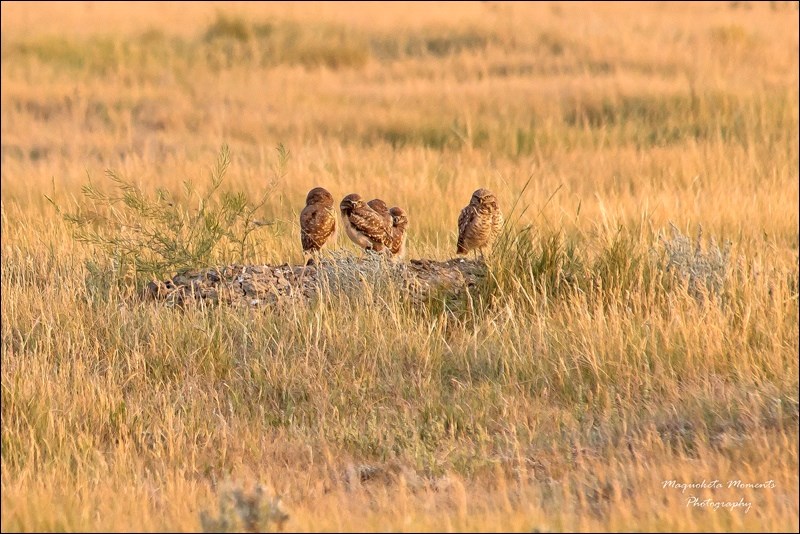Submitted
After their long journey from the American Southwest and Mexico, Burrowing Owls have finally arrived at their summer home on the Prairies. With breeding season well underway, the endangered owls are now pairing up and selecting their nesting spots where they will soon be laying and incubating their eggs.
Finding prime real estate for their nest is critical and not always a simple task. According to Nature Saskatchewan’s Operation Burrowing Owl Coordinator, Kaytlyn Burrows, “Burrowing Owls love open areas of short grasslands with burrows for nesting.” Since they cannot dig their own burrows, Burrowing Owls must rely on those abandoned by badgers, Richardson’s ground squirrels (gophers), and other burrowing mammals. The owls also benefit from livestock grazing, which keeps the grass short enough for the owls to spot their predators.
These unique birds can be identified by their yellow eyes and the mottled pattern of their brown and white plumage. Their legs are also long and bare – giving them an appearance of walking on stilts. The juveniles can be recognized by their solid buff-coloured chests. Burrowing Owls are only slightly larger than a robin and have a height of about 9 inches. The owls are known as generalist predators, and as such they eat a wide variety of small animals. This may include mice, voles, snakes, and insects. “Over the course of a summer, one owl family can consume up to 1,800 rodents and 7,000 insects!” says Burrows. For this reason, Burrowing Owls act as excellent pest control.
Unfortunately, the population of Burrowing Owls continues to decline. There were an estimated 795 mature individuals in Canada in 2004, but the 2015 estimate suggests there are now only 270 Burrowing Owls remaining in Canada.
There are a number of ways to contribute to the conservation of these owls. Landowners can voluntarily participate in Operation Burrowing Owl and conserve owl habitat as well as monitor the species on their land.
“Without the voluntary efforts of landowners, land managers, and the general public, recovery of this unique prairie owl would not be possible,” says Burrows. She encourages the public to “get out there this summer and explore, you never know what you will find.” If you spot a Burrowing Owl, please call Nature Saskatchewan’s toll-free HOOT Line, 1-800-667-HOOT (4668) or email [email protected]. “When you report a sighting you are playing a very important role in Burrowing Owl recovery. Every sighting is critical!” says Burrows. Information given is never shared without permission.




